AMD Ryzen AM4 Gaming i 2024
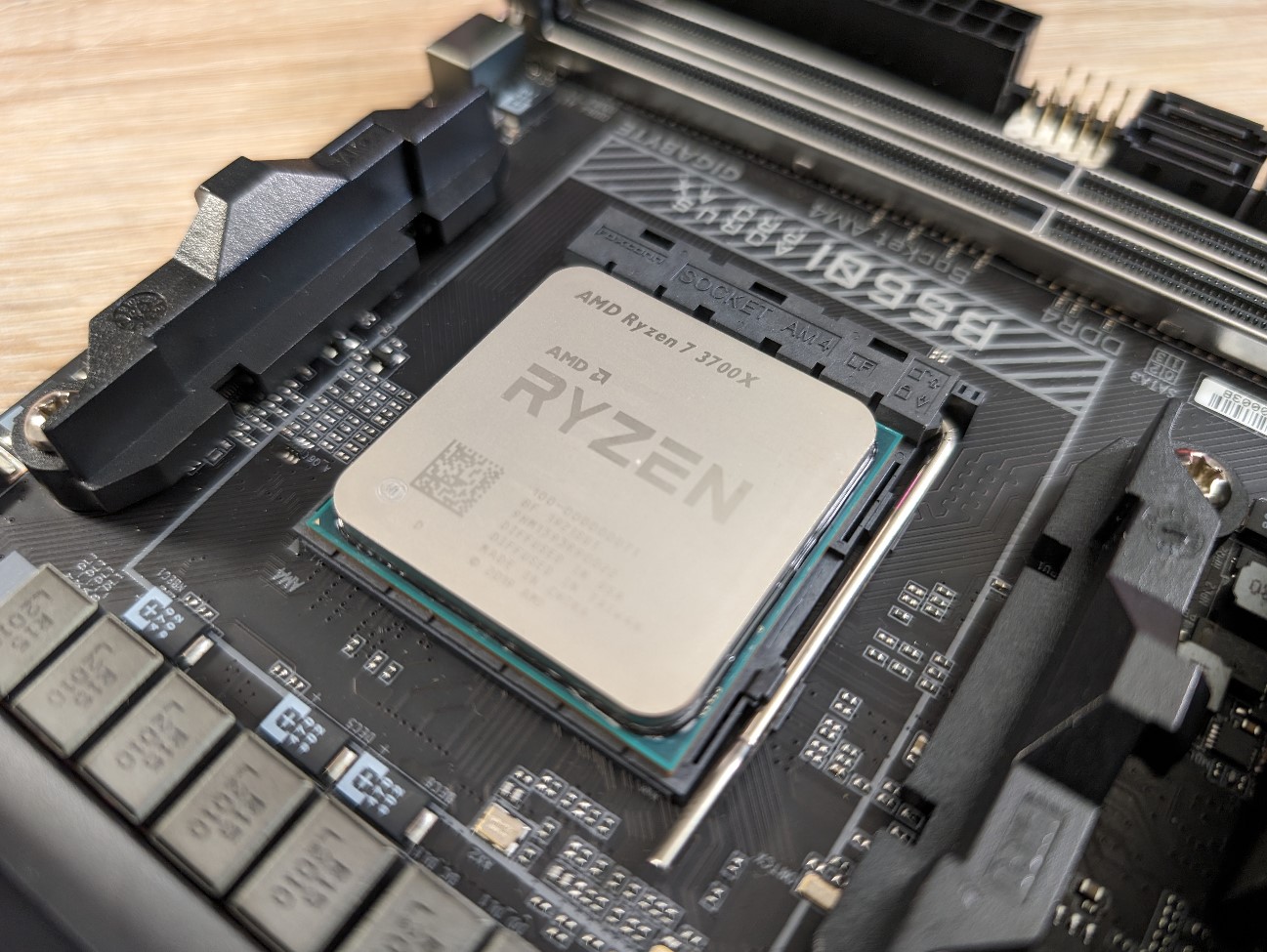
Although it has now been quite some time since AMD launched the AM5 platform, which was presented at CES in 2022 with the Ryzen 7000 series.
Despite that, there is still a reasonable supply of hardware for the older AM4 platform. If you throw yourself into it, the used market is also somewhat larger for the AM4, which is very natural when it has several years behind it.
Despite the age and reports from AMD to the contrary, they are actually not quite finished with the AM4 platform yet. At Computex this year, for example, new AM4-based CPUs have just been announced.
.png)
With that in mind, AMD AM4 gaming is definitely not dead yet and today I am throwing myself into a small project to show what we can get out of a gaming system based on the AMD AM4 platform.
To make it a little more spicy, it will also be a mITX system, so it will be a perfect system for the gamer with a little less space or perhaps with a desire to be able to have his system under his arm.
Hardware
If we have to look at the hardware that will be used for the system, then the choice of CPU has fallen on an AMD Ryzen 7 3700X CPU. It comes with 8 cores and 16 threads with a max boost clock of 4.4 GHz.
It also lands with a reasonable TDP of 65W, which should be controllable in our mITX system.
For RAM I use 16GB 3200 MHz G.Skill Flare X DDR4 RAM. For a system primarily aimed at gaming, 16GB of RAM is fine, although 32GB would have been nice.
CPU and RAM come together in a Gigabyte AORUS B550i Pro AX motherboard. Here we get a good selection of features, without ending up paying for a lot of high end features that are not relevant in a mITX gaming system.
We get the option of two M.2 slots, both with PCIe 4.0 x4 support. It comes with good USB connections, WiFi 6 and 2.5GbE LAN.
Storage in the system is handled by a 2TB KIOXIA Exceria Plus G3 M.2 SSD. That should give us more than enough space for both Windows 11 and a reasonable library of games. If more is needed, luckily there is another M.2 slot on our AORUS motherboard.
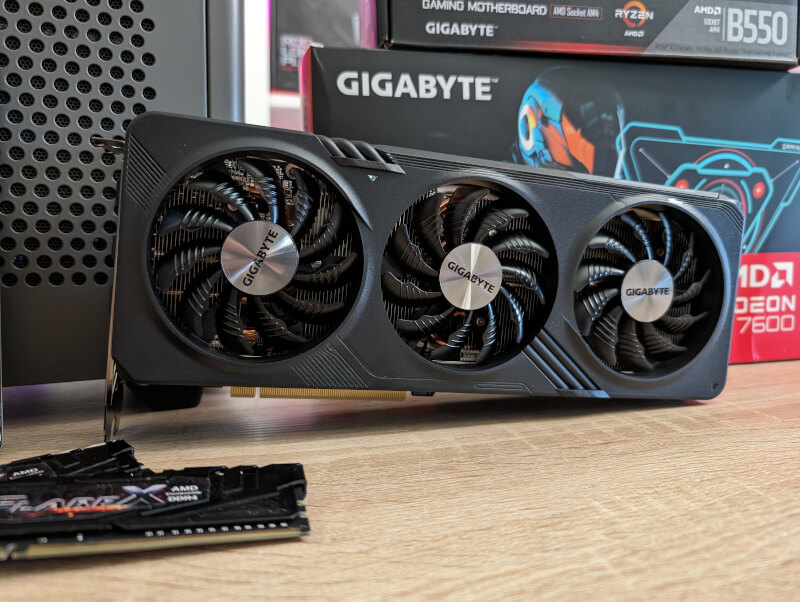
The last internal component will be the graphics card in the system, which is also from Gigabyte in the form of their Gigabyte Radeon RX 7600 XT Gaming OC 16G card. It is reasonably efficient and has a size that will not be a problem for our mITX form factor.
Last but not least, the system must also have a home and it will be in a Cooler Master MasterBox NR200P Max. It is a nice light solution for a mITX system as it is a complete solution with both power supply and cooling already in place.
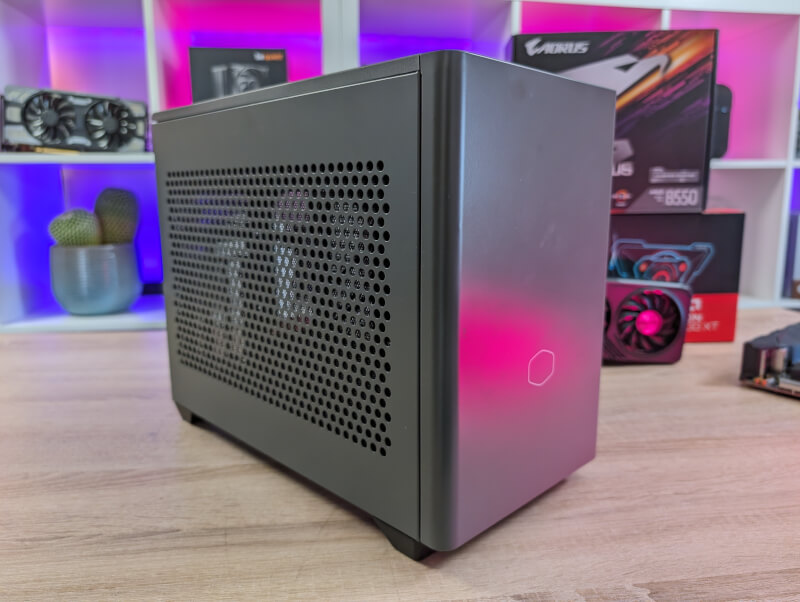
In the MasterBox NR200P Max, we get a Cooler Master V850 FX Gold power supply and a 280mm AIO cooler for the case. Both parts are installed and specially adapted to the narrow enclosure, which means we don't have to mess with long cables and hoses.
With all the parts in place, it's time to assemble the system and get Windows and games in place so we can see how it all performs.
Assembly of the system
Assembling the system went without any major problems, despite the fact that the mITX form factor can often be a bit more difficult to deal with.
I always prefer to assemble and test the motherboard, CPU, RAM and storage outside the case. That way, it is somewhat easier to troubleshoot if there are problems along the way.
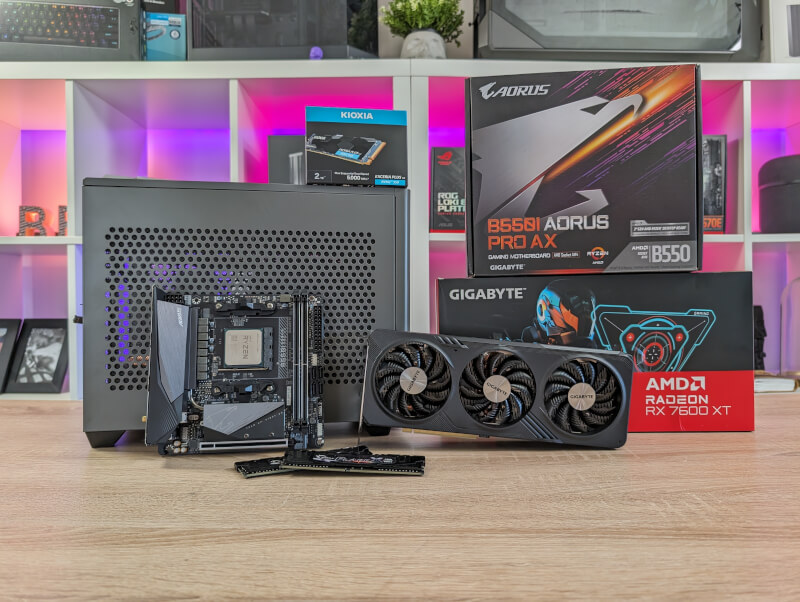
So I installed all the components outside the case and at the same time installed Windows 11 and tested everything worked as it should. In this connection, I just used a regular stock AMD CPU cooler.
Everything went smoothly and I was ready to install a tested and fully functional system in the case.
Despite the small form factor, the process of getting the hardware into place in the MasterBox NR200P Max was fairly straightforward. The fact that both the power supply and the AIO solution were pre-installed naturally helps a lot in that process. At the same time, it is also a big bonus that cables etc. are specially adapted to the cramped conditions in the cabinet.
All this meant that I quickly had all the parts in place and could prepare to test the system in its final form.
Testing
Although the purpose of today's project is not as such to benchmark the hardware, I still wanted to throw in a few tests to show what performance I got out of the system.
I paired the system with an Ultra Wide monitor with a resolution of 3440x1440 as it is a good match for a good gaming experience with the included hardware.
In a load test where I let the system run a Heaven Benchmark on loop for half an hour, I ended up with an average temperature of 67 degrees on the CPU, while the Graphics card peaked with an average of only 63 degrees. So both parts are definitely in the perfectly acceptable end, which was nice to see.
In relation to gaming performance, I tested a few of the games that we usually test in our graphics card reviews.
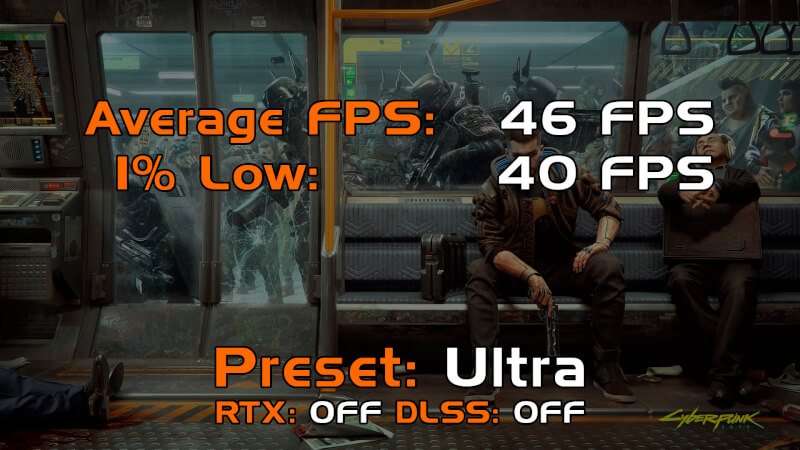
For Cyberpunk 2077 on High preset, the system landed with average FPS results of 46 FPS and a 1% low of 40 FPS without using upscaling.
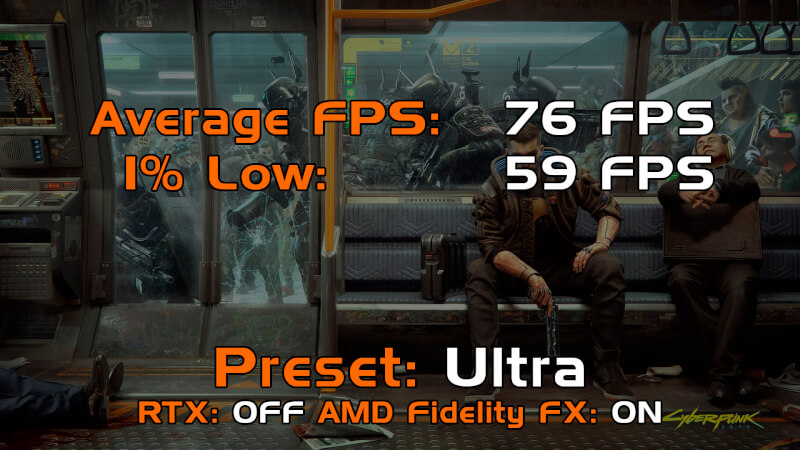
Using AMD Fidelity FX upscaling, however, the results landed at a somewhat more solid 76 FPS on average, with 1% low results of 59 FPS without having any noticeable impact on the game's visual presentation.
The next game in the test was Outriders and here the system on Ultra preset managed average FPS results of just over 60 FPS with 1% results of 45. So just on the pressured side for a shooter game. However, it is still quite capable if we take the resolution of the screen and the preset settings into account.
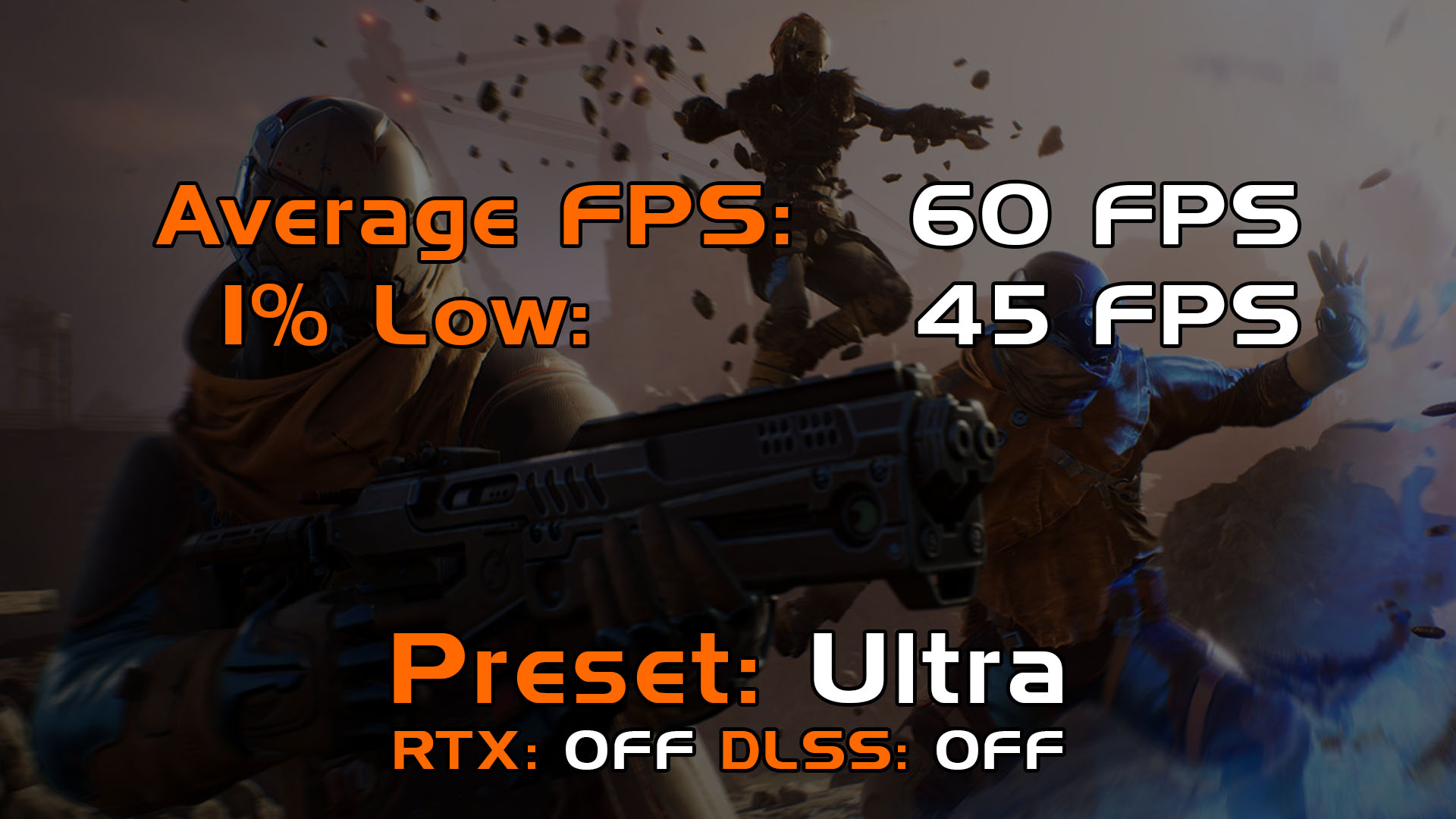
However, adjusting the settings or resolution scaling quite easily gave me results of around 70-8+ FPS on average without suffering a huge loss in visual quality.
Overall, I think I got super nice results for the small system considering the hardware. The system has never been intended as a high-end system, which of course is also reflected in the price of the hardware in the system.
Despite that, it is still a competent system that has enough power to provide a super solid gaming experience even when paired with an Ultra Wide gaming screen. If you jump down to a Full HD High Refresh monitor, it will be an even better match if you primarily play FPS games.
Latest complete system
-
05 Deccomplete system
-
09 Augcomplete system
New design on Mac Pro and Mac Studio next year
-
04 Juncomplete system
AMD Ryzen AM4 Gaming i 2024
-
04 Marcomplete system
Beelink SER6: New powerful Mini PC
-
19 Jancomplete system
Super compact gaming with the EM780
-
30 Novcomplete system
Here are the most popular PC parts
-
25 Febcomplete system
The Ultimate Cyberpunk 2077 Build
-
18 Julcomplete system
MSI AMD Gaming PC Build
Most read complete system
Latest complete system
-
05 Deccomplete system
Arctic Senza - Under Desk PC
-
09 Augcomplete system
New design on Mac Pro and Mac Studio next year
-
04 Juncomplete system
AMD Ryzen AM4 Gaming i 2024
-
04 Marcomplete system
Beelink SER6: New powerful Mini PC
-
19 Jancomplete system
Super compact gaming with the EM780
-
30 Novcomplete system
Here are the most popular PC parts
-
25 Febcomplete system
The Ultimate Cyberpunk 2077 Build
-
18 Julcomplete system
MSI AMD Gaming PC Build






